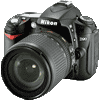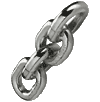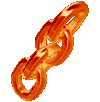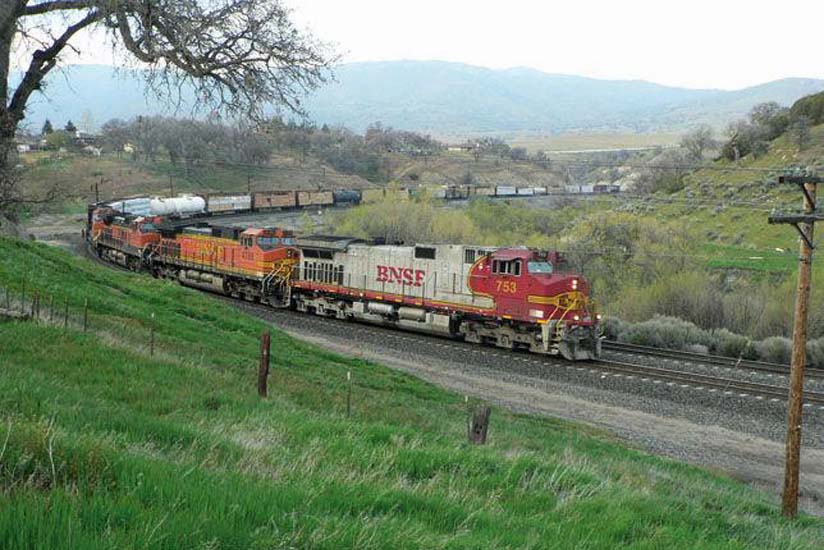
"Warbonnet" is primarily a railfan term.
Santa Fe employees normally referred to these locomotives by the less romantic and more descriptive term "red nose."
Santa Fe's Super Chief, an all stainless steel streamliner running between Chicago and Los Angeles, was America's most famous and finest train.
On 18 May 1937 the much-improved Super Chief 2 traversed the 2,227.3 miles from Los Angeles over recently upgraded tracks in just 39 hours and 49 minutes.
The train had such a good reputation that Santa Fe refused to let Amtrak continue the name, to prevent its memory from being spoiled by subsequent service.
The Super Chief was painted in the Warbonnet paint scheme used by the Atcheson Topeka & Santa Fe (ATSF) on its passenger streamliners starting in the late 1930s.
The Santa Fe, the yellow and red Warbonnet, is one of the most famous paint schemes in recent memory.
Pre-war, the paint scheme was used on its E-units and after the war on the F series and ALCOs.
Designed to add a splash of color to the railroad's locomotives, the design was used through to the end of Santa Fe passenger service, and it was later re-introduced for freight service on the PA series locomotives.
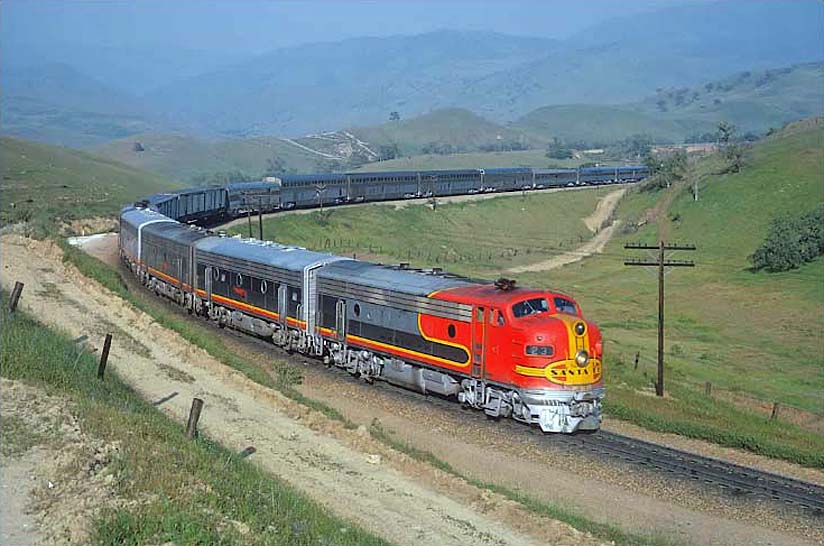
The Santa Fe was noted for long stretches of running where speeds over 100 mph were authorized, and it retained an extensive fleet of passenger trains until the late 1960s.
As a result, the passenger F7s remained in their intended service longer than equivalent locomotives on many other railroads.
Through the 1950s matched A-B-B-A sets were typically seen on the Super Chief, El Capitan, Chief, and other trains.
A-B sets could be found on Williams-Phoenix, La Junta-Denver, and Texas trains.
Single A units did not normally operate, since the steam generators were needed for both heating and air conditioning, and they were in the B units.
The need for large numbers of new passenger locomotives for U.S. railroads had essentially ended by the 1960s with passenger rail traffic fading by the year and more EMD E-units available than required in many cases, the day of the Warbonnet had seemingly passed.
When Amtrak took over operation of the nation's passenger service on 1 May 1971 it ended the 35 year run of the Super Chief on the Santa Fe.
In 1974 the Santa Fe forced Amtrak to drop the train's name due to what appeared to be a decline in service.
Amtrak replaced the train over the same route with its Southwest Limited.
Later the train, after an agreement was made with ATSF, became the Southwest Chief in 1984.
The day of Santa Fe's streamliners was over by the late 1980s, but the Warbonnet paint scheme would temporarily return when ATSF brought back the Warbonnet for its new Super Fleet locomotives.
This period also marked a return to the Warbonnet paint by the surviving FP45s, new SD75Ms, GP60s, Dash-8s, and Dash-9s that came from the factory finished in an updated Warbonnet, the first such new locomotives to be so painted in a generation.
After the merger of ATSF with the Burlington Northern Railroad in 1996 to form the BNSF Railroad some of the engines were repainted in the BNSF orange and black color scheme.
However, a lot have survived in the original paint scheme and can be seen on the tracks here in Tehachapi on a regular basis.
Ed Gordon.
provisions in Section 29 of the Canadian
Copyright Modernization Act.





